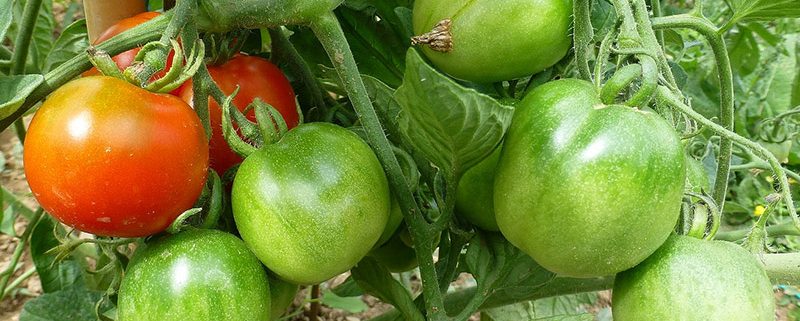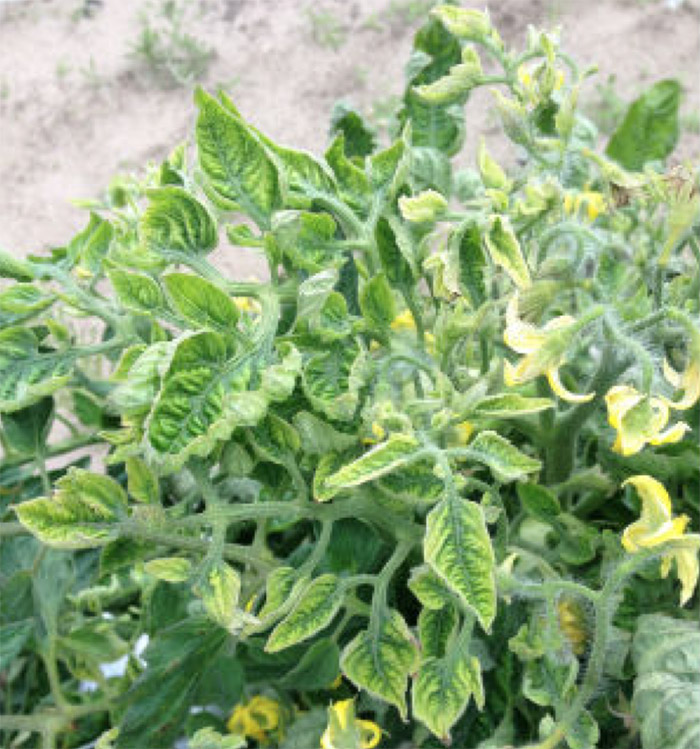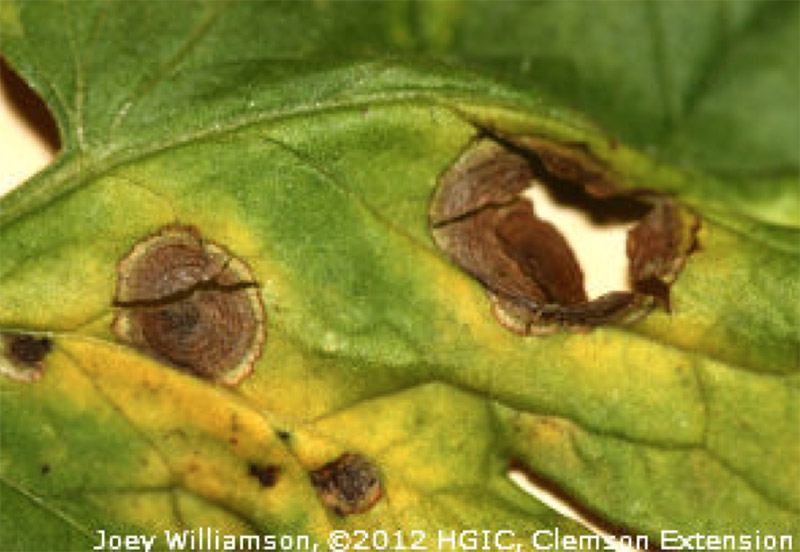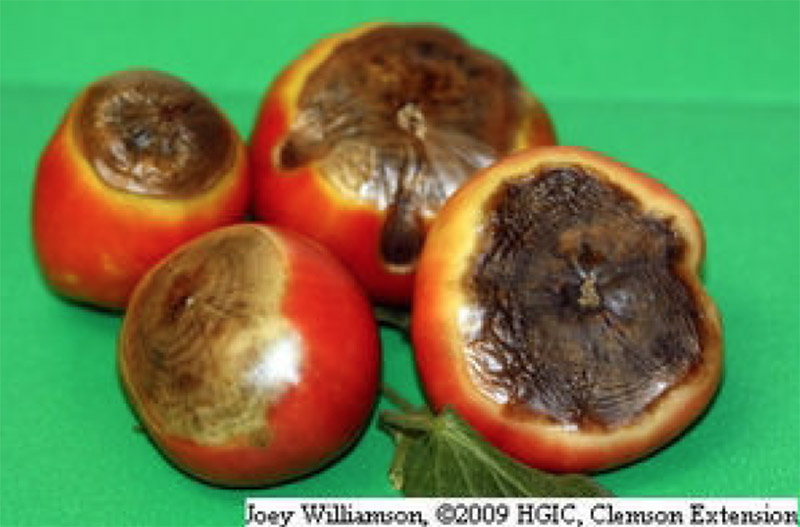Gardening: Troubleshooting Problems with Your Garden Tomatoes
Cary, NC – Our last garden article discussed starting a vegetable garden; all the basics for a great summer harvest. Now that that’s done, let’s look at the problems that may arise with the most popular garden vegetable of all, the tomato. In my world, nothing beats a vine ripe tomato, warm from the sun and making the perfect tomato sandwich!
Tomatoes should be easy to grow. Lots of varieties have been engineered to be less susceptible to garden problems and we have good growing conditions here in the Piedmont. But tomatoes do need care and a watchful eye to spot problems. Here are the most common problems and how to solve them.
Aphids
These are a very common problem for many plants in the garden. They cause stunted growth and small yields. They can be gray, green, pink or white and suck plant sap. A good indicator you have aphids are lots of ants on your plants. They are attracted by the honey dew the aphids create from the sap. You can often take care of them by spraying with a hose knocking them off.
Leaf Curl
Although this won’t effect your tomato production, it does indicate that the weather conditions have fluctuated to the point to make your plants weak. Monitoring moistures levels should help.
Cracking
This is very common and caused by quick changes in the weather. Drought mixed with wet conditions will cause the tomato to swell and then crack. Mulching can help as well as buying crack-resistant cultivars.
Catfacing
This is a deformed fruit with a puckering effect on the skin. It occurs during the flower formation when temperatures drop below 50 degrees Fahrenheit. Planting after the last frost date will help.
Hornworms
I actually think these guys are pretty cool but they will defoliate the plants and eat some of the tomatoes. They are large green caterpillars that grow up to four inches long and have a very distinctive horn. The best way to control is to just pick them off and watch each day for new ones.
Blight
A common fungal disease caused by frequent rain, high humidity and warm temperatures. It causes irregular leaves with dark brown spots that turn yellow and fall off. When the leaves fall off, the tomatoes are susceptible to sunscald. Avoid overwatering, especially late in the day. Remove the damaged leaves and mulch to prevent the spore in the dirt from getting on the plant.
Blossom Drop
Pollination that occurs when temperatures are too hot or too cold causing the flower to drop and reduces crop yields. Planting after the last frost can help avoid this problem.
Blossom End Rot
Unlike the above problem, this occurs after the fruit is developed, creating a soft watery spot at the end of the tomato. It creates a calcium deficiency with excess nitrogen, turning the leaves to yellow. Keep even watering levels and mulch.
Fusarium/Verticillium Wilt
This fungus lives in the soil and affects the vascular system, turning the stem brown and the leaves yellow, mostly at the bottom of the plant. There is little you can do but remove the plant and avoid planting tomatoes in that area for four to five years.
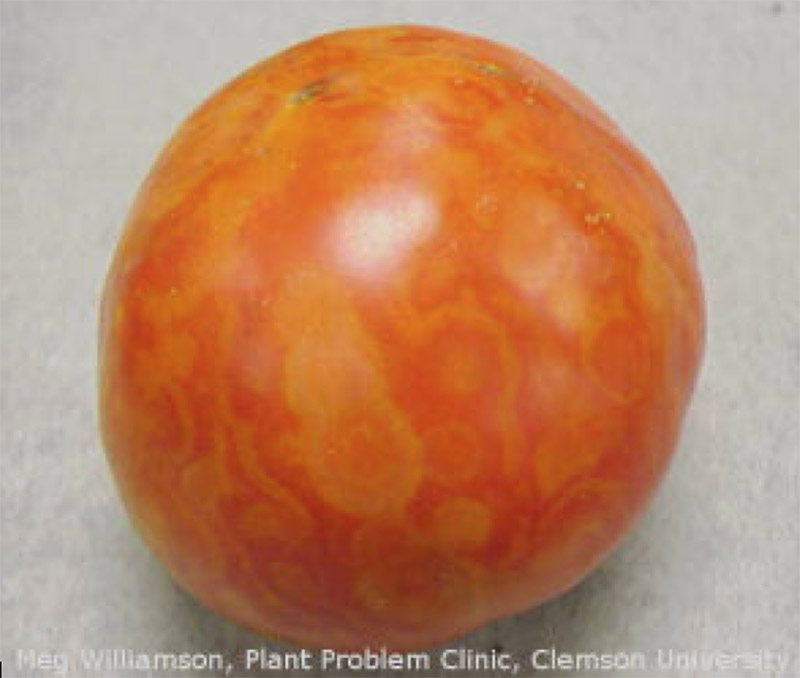
Fusarium/Verticillium Wilt symptoms on tomato fruit. Meg Williamson, ©2012 Plant Problem Clinic, Clemson University.
Stink Bugs
These are large brown or green bugs that are very common in the yard and sometimes in the house. They suck the fruit of the tomato, causing hard, yellow spots. You can control them by throwing them away by hand in outside garbage cans.
In general, try to plant your tomatoes in a sunny location with six or more hours of sun, mulch and make sure to have even water applications. Then check on your plants often. Catching problems early makes all the difference. For more vegetable garden solutions go to: http://www.clemson.edu/extension/hgic/pests/plant_pests/veg_fruit/hgic2217.html.
Story by Melody Hughes. Photos courtesy of the University of Clemson and Cristina Sanvito. The Gardening column on CaryCitizen is sponsored by Garden Supply Company on Old Apex Road in Cary.

